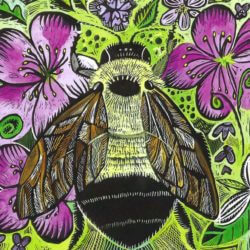I could travel to Tibet and back in the time since I wrote on this blog. But that’s not where I’ve been. First, there were the holidays and some wonderful family time. And then a deft segue to the Hamline University Low Residency MFA in Writing for Children and Young Adults (January 6-17). It’s been a wonderful ten days. We’ve been talking about character–how writers of all ages can create and write about characters.
Phyllis Root and I did a workshop together about picture book characters and emphasized how we, as readers, care about characters who have a yearning. Wilson Bentley had a yearning, a passion, to photograph snowflakes. In M.T. Anderson’s book Strange Mr. Satie (Viking, 2003) the composer Erik Satie had a yearning to create a new kind of music. But it’s not just real characters who have yearnings.
For example, in Amy Hest’s In the Rain With Baby Duck Baby Duck has a yearning to see Grandpa and eat pancakes, but–she hates rain. Phyllis and I also talked about how we might bring readers to care about non-human characters such as chiru and bogs (The Big Belching Bog, University of Minnesota Press, 2010). We try to include details that readers can connect with. Also regarding picture books, Marsha Chall gave us a tour through a huge gallery of anthropomorphic characters.
Anne Ursu gave a wonderful talk about “the hero’s journey.” Liza Ketchum showed us all how to make our characters more rounded by including details of their work lives in our writing. Claire Rudolph Murphy had us writing about characters who are antagonists. Kelly Easton helped us hone our skills in defining our characters by dialogue and the way they talk. Jane Resh Thomas helped us to look in our own lives for characters worth writing about. And Marsha Qualey reminded us of the protagonist who is paralyzed, who cannot act and how we can keep readers turning the page, even when the protagonist is doing little.
For anyone who wants to write, young or old, it’s good to listen to people talking, to practice writing dialogue, to notice characters at the bus stop, standing in line at the bakery, to imagine lives and stories for them, patterns of speech, likes and dislikes.
Sometimes when I have been writing with students I have taken calendar photographs of animals to a classroom and we have talked about what kind of dog this might be, what this dog might love to do, or avoid doing. We bring details from our own lives and our own pets to these discussions, just as all writers do when they are writing, and we are surprised by what we think of to add.
And yesterday in his graduation speech Gary Schmidt reminded us, in a moving speech, that writers must notice the world, must love the world and love their readers.
And now it’s back home to write some characters.


